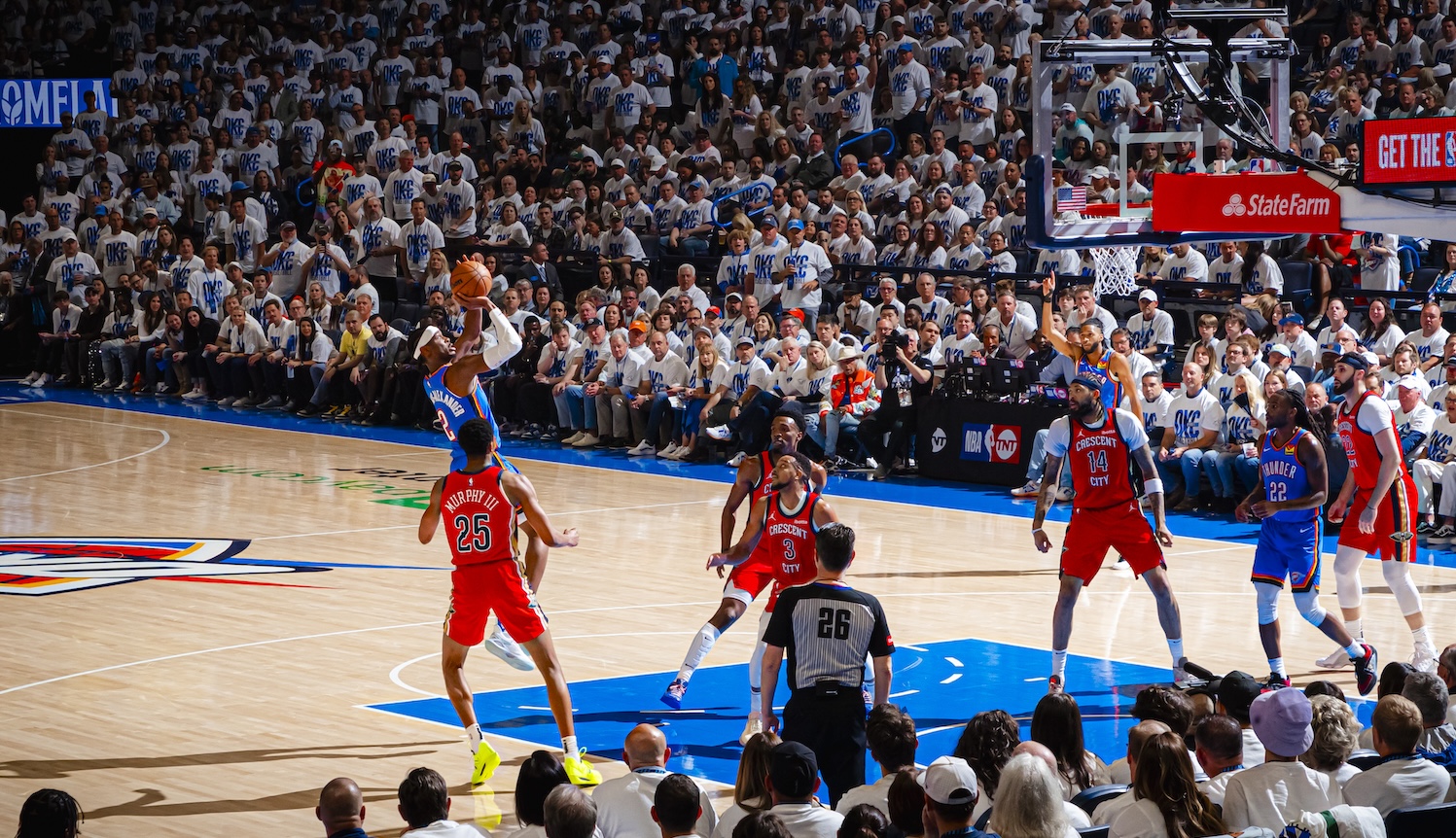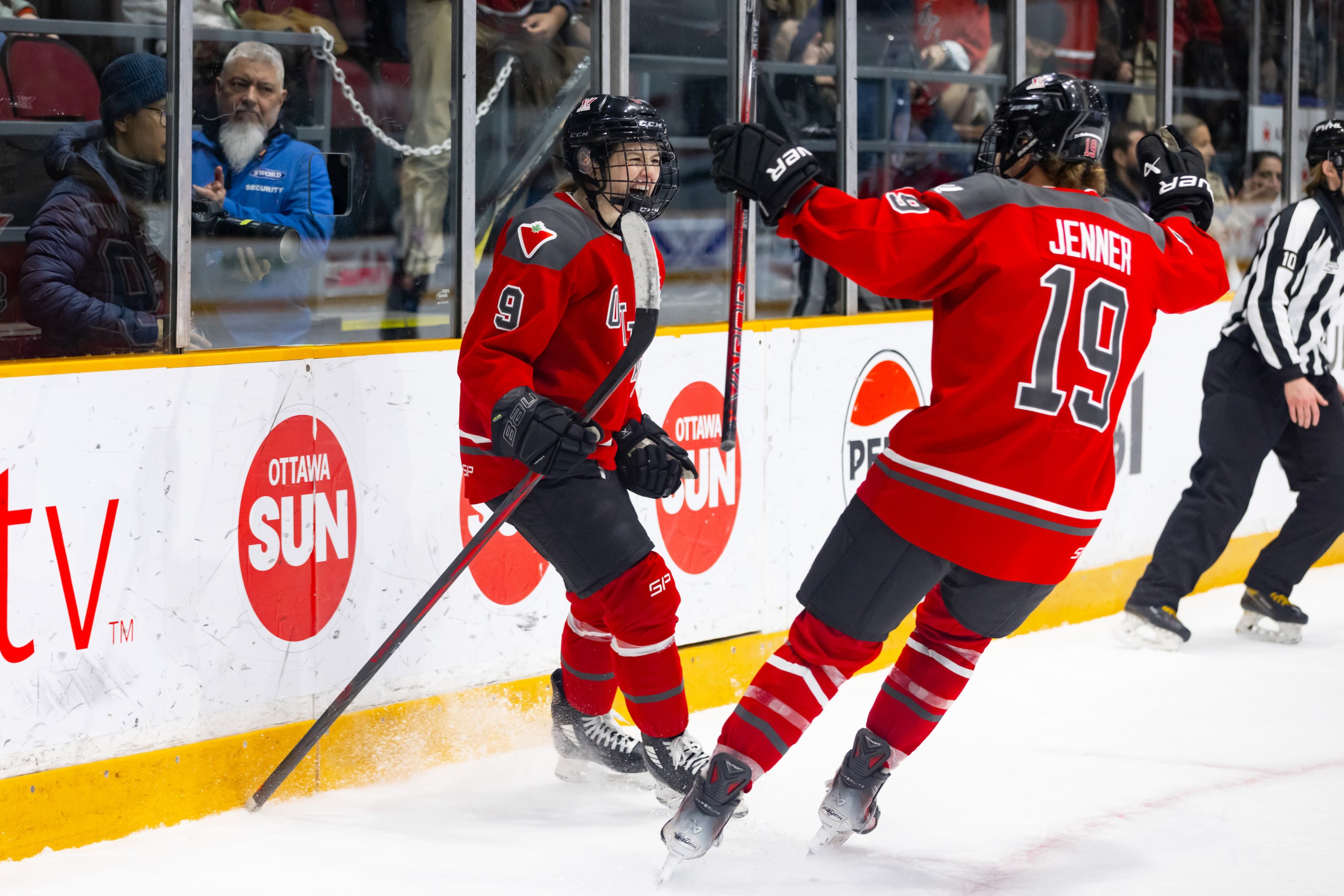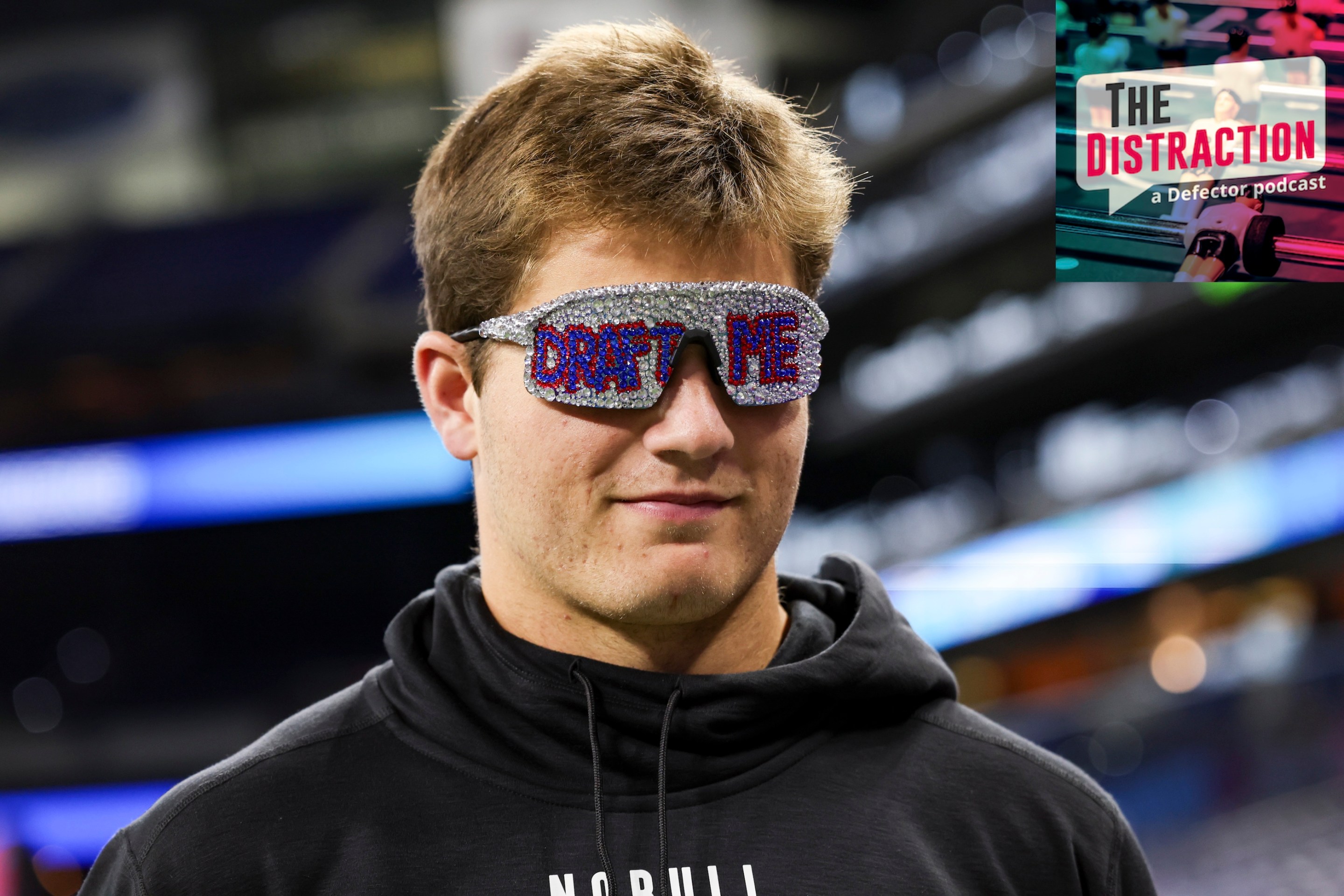An Interview With Throwing Expert Dan McQuaid, By Me, Dan McQuade
11:36 AM EDT on July 29, 2021

My interview subject couldn’t get into the virtual meeting I'd set up, and it was my fault. I was interviewing a man named Dan McQuaid, a high school track coach who also runs McThrows.com, a blog that covers track and field’s throwing events—shot put, discus, javelin, hammer throw—which begin on Thursday. The problem was that McQuaid had been invited to the meeting as "Dan McQuade." This, it is worth mentioning, is my name. After a humbling lesson in how hard it can be to spell your own name differently, I finally figured out how to get him into the chat.
I first encountered McQuaid thanks to a message from fellow track obsessive and friend-of-Defector Dennis Young of the New York Daily News. McQuaid's website is quite good, both as analysis of the state of the art in the sport and as a reminder of what I've always liked about track. I ran track as a kid and was not particularly great, but it instilled a love of exercise and a love of watching track and field.
As I’ve gotten older, I have delighted in admitting when I don’t know everything about a subject as a journalist. (I am embarrassed how I faked things earlier in my career.) And though I am a fan of the throwing events—despite being obnoxiously skinny at the time, I always liked doing the shot put and discus at track camp—I am not really all that informed on the throwing events. As I learned about elite-level throwing from Mcthrows.com, I realized I had a workaround. Maybe Dan McQuade couldn’t write an expert preview of the Olympic throwing events for Defector, but Dan McQuaid surely could.
A quick primer: The “throwing events” are the four events in track and field where entrants compete to see who can throw something the longest. It’s all pretty straightforward. Contestants throw the shot (a heavy ball), the discus (a heavy disc), the javelin (a heavy spear) and the hammer (a heavy ball on a wire). Technically you “put” the shot, but you get the idea. The thing is to take the object and then fling it to the best of your abilities.
McQuaid was nice enough to talk to me about the broader state of play in the sport and what it's like covering events most Americans barely bother to learn about every four years. The following interview has been edited for clarity and style.
Hi Dan! Great to meet someone with such a great name. I hope you don’t take this as an insult, but I am primarily doing this interview because I think it’ll be a funny headline: Dan McQuade interviews Dan McQuaid. How did you get into covering throwing events?
So I went to high school in the suburbs of Chicago, at the school that I now work at, Wheaton North High School. Like a lot of schools in this area, it has really strong athletic programs. And I started out as a football player. The coaches there tried to get us to do other sports, and so I tried wrestling. My wrestling career lasted, I want to say, three seconds. And it was humiliating to me, as I said, “OK, no, I hate this and I want to eat.”
And so then I tried track, and I thought I was a sprinter. The coaches quickly realized that I wasn’t. And they said, “You know, you want to be a lineman in football, why don't you do a shot and disc.” And then that became my favorite thing. I've seen that happen. I've been coaching for almost 30 years now, high school, and many times kids come to track from football. And then they really feel comfortable and happier with track.
When I became a coach, I became probably even more obsessed with track. And the smartest thing I ever did in my life was marrying the person I married. For a couple of reasons: One, she's immensely kind to me. Two, she has a brother who lives in southern Germany and a sister who lives in Berlin half the year—and there's a lot of really interesting track and field that goes on in Europe. And it's a lot cheaper to go to Europe when you have somebody to stay with.
So I started going over there in 2000. Near where my brother in law lives, they had this big throwing festival with the best throwers in the world... There was a print magazine [Long & Strong] run by one guy, Glenn Thompson, and so I started writing for him. Glenn folded his print magazine about 10 years ago, and Roger Einbecker said to me, Let's start a website. I'm lucky I get to write all the time about the sport that I love.
You said you played football first then started track and field. What made you like the shot and disc so much?
People like me that fall in love with those events love the the grind of them. And the grind in those events is, really, two things. One is weightlifting—it’s not a glamorous activity. It’s you and the weights. I go through this in coaching. There are kids who come in our program, and they just don't like weightlifting, and so then the sport doesn't work for them. But I loved that. I had to be dragged out of the weight room.
The other part of the grind is constant repetition and trying to build technique. There are kids who just are just like, after one day, “Wait, what? I'm holding an imaginary discus? What are you talking about? I'm never doing this again.” But if it's your thing, there's just something kind of hypnotic about it.
I don't know if you get lost in it and it makes your brain feel good the way the way when—like, when I was a little kid, I would build model tanks down in our basement. Your brain goes to a happy place and time just just flies. We all need something like that in our lives, whether it's strumming a ukulele or building a model.
What’s it like covering track based in the United States, when all of the major meets, like Diamond League, are in Europe?
What’s interesting is that in America participation in track and field dwarfs anywhere else. I teach at a high school of about 2,000. Between the boys and the girls we have, for sure, over 200 kids doing track every spring. Five miles away at another high school, same thing. But in the United States, people do not go watch track.
But let me tell you about a meet I went to in Switzerland. It was 2001. The best German discus thrower was a man named Lars Riedel. He was Olympic champion in 1996. He had just won the World Championships a few days before he came to Zurich. And he was a very formidable man, 6-foot-6, built like a Greek god. And he was warming up wearing a t-shirt. And for competition he took the t-shirt off and pulled up the straps of his singlet. And when he took his t-shirt off, thousands of people went nuts—cheering like crazy, largely because he took his t-shirt off. But in this country, people do track, but nobody pays attention.
So I’ve been fortunate enough to cover plenty of meets in person. I covered the Olympic Trials this year virtually. The most important press, they probably did live stuff in the stadium. But people of my tier got Zoom links. Ryan Crouser broke the world record. I was watching the men’s shot on my computer in a hotel room in Champaign, Illinois, because I was on my way to the boys state track meet on the next day. So I interviewed [Crouser] through Zoom, submitting questions to the new world record holder from a hotel room in Illinois. And then I got up the next morning, and, you know, worked.
From the Olympic Trials we know the men’s shot put could have several Americans on the podium. Crouser, the defending Olympic champion, set the world record at trials. Joe Kovacs and Payton Otterdahl were not that far behind him. What's another throwing event fans should be looking to watch?
There’s going to be some sensational competition at the Olympics. The men’s shot at the world championships in Doha in 2019 was incredible. Crouser, Joe Kovacs and a New Zealand thrower named Tom Walsh put on what may have been the greatest competition in any event … those three gents are all back. Walsh has not thrown up big numbers this year, but he's getting ready—and he's posted some things on Instagram indicating that he's feeling really confident. That's just going to be a hellacious battle. And you might see a world record in the Olympics, which is really a rare thing.
The women's hammer is going to be fantastic. Anita Włodarczyk, from Poland, has dominated this event for eight years, but she’s been kind of banged up. She had surgery a year ago. And she's working hard to get back to her old self; her old self would be like an 80-meter throw. But DeAnna Price, the American, she won in Doha in Anita’s absence. At the Olympic Trials, she broke the American record throw, over 80 meters. So that could be a hellacious battle, too.
It's kind of it's kind of funny to me that with the COVID year, a lot of athletes—in all events, not just the throws—just trained. And if you're a track athlete, you can find a way to train, right? You can go throw in a park. And it seems like that year of training without traveling and competing really helped some people. The performances in a lot of events were just astonishing at the trials. And I think will be again—maybe not exactly the same people, but I think there are going to be astonishing performances all over the place at the Olympics.
If you liked this blog, please share it! Your referrals help Defector reach new readers, and those new readers always get a few free blogs before encountering our paywall.
Visual Editor. Runs defectorstore.com. Philadelphia-based, if you couldn’t tell. dhm@defector.com
Stay in touch
Sign up for our free newsletter




